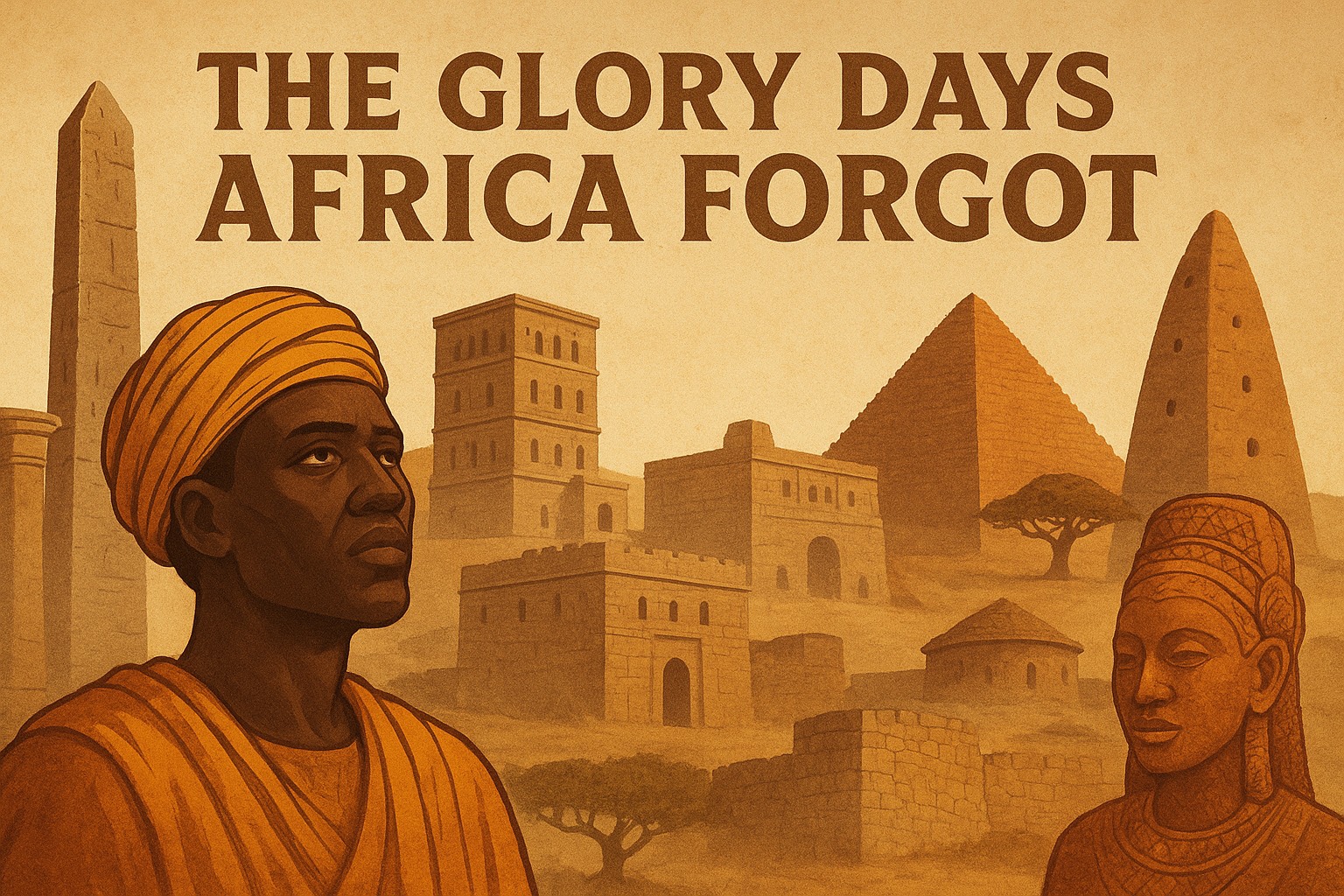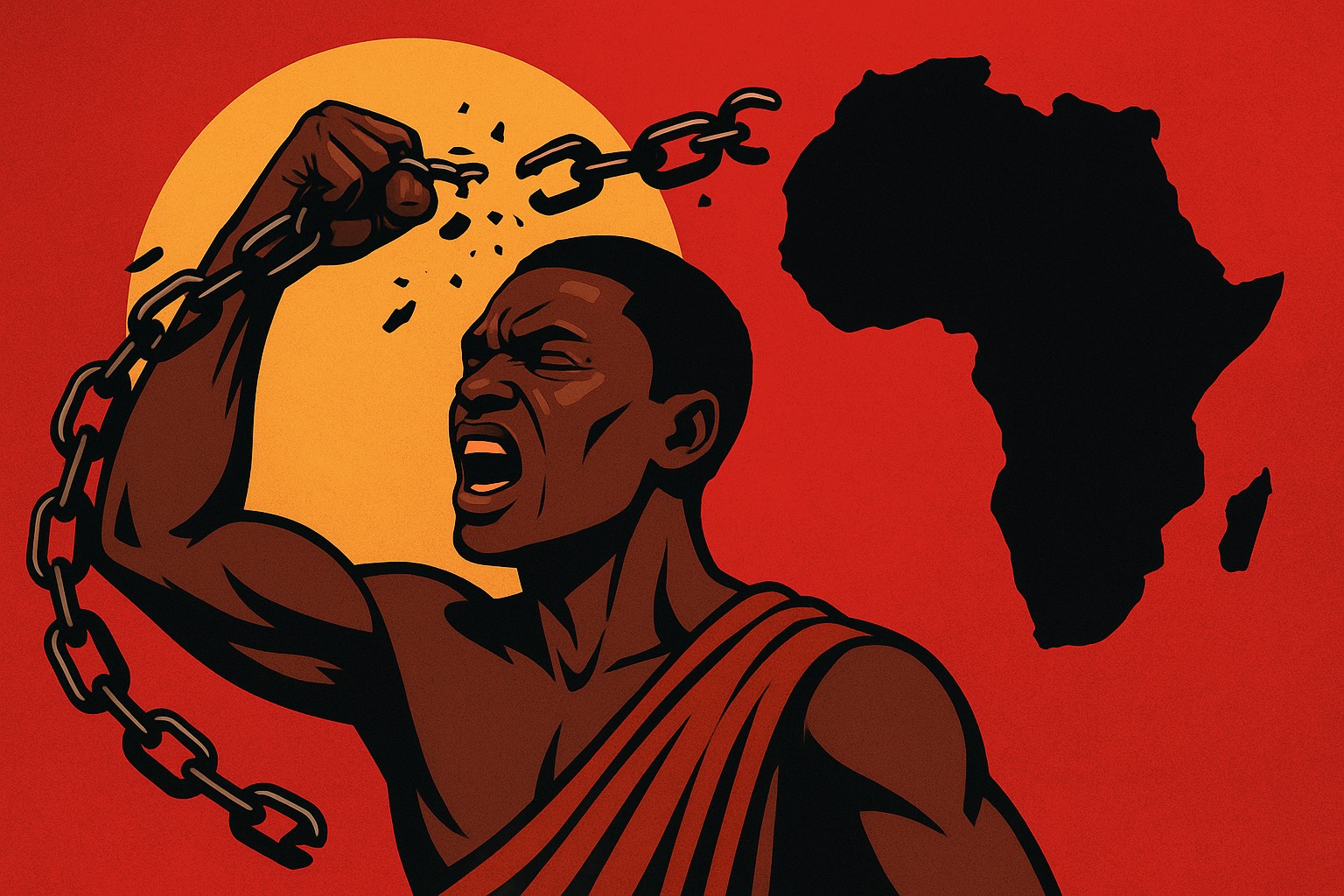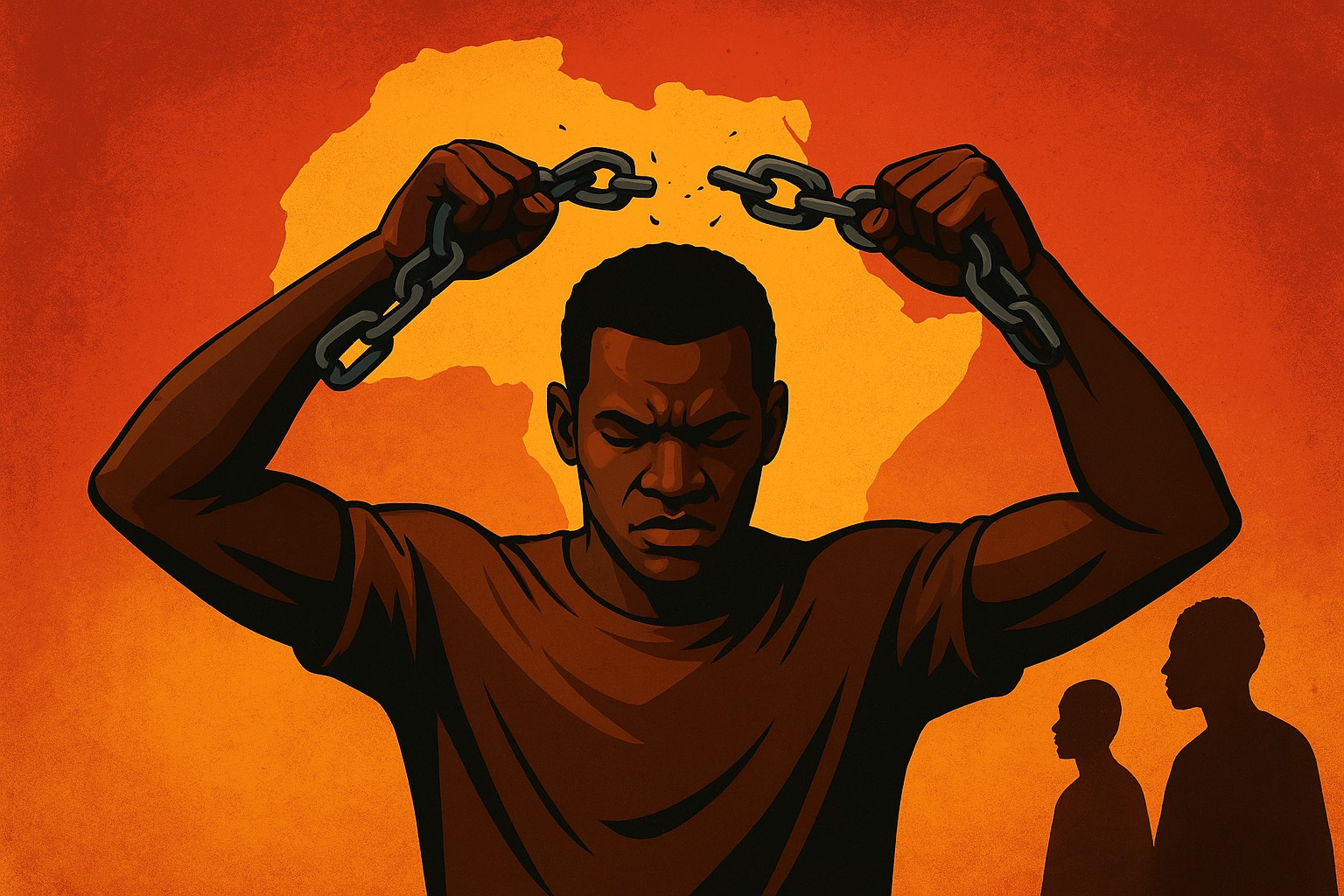The Glory Days Africa Forgot: What Ancient Kingdoms Teach Us About the Future

The Glory Days Africa Forgot: What Ancient Kingdoms Teach Us About the Future
Discover Africa’s forgotten empires from Aksum to Mali and Great Zimbabwe and the powerful lessons they hold for building the continent’s future.
It’s easy to believe that African greatness is a myth, something romanticised, exaggerated, or locked in dusty history books. But the truth: several ancient African kingdoms built civilisations so advanced that they challenge what most assume about pre-colonial Africa. They had trade, learning, architecture, governance, and global connections. And their legacies aren’t just stories for nostalgia; they contain blueprints for Africa’s future. Here are real histories, concrete achievements, and lessons we should reclaim.
Aksum: Currency, Christianity, and Engineering
In what is now Ethiopia and Eritrea, the Kingdom of Aksum (approx. 1st century CE to around 940 CE) was a hub of trade, power, and innovation.
• Trade & Diplomacy: Aksumers traded with Rome, India, Arabia, exchanging ivory, gold, exotic animals, and frankincense. Their port at Adulis was globally known.
• Coinage: They minted their own coins in gold, silver, bronze, and some bearing inscriptions in Greek and Geʽez. Issuing currency isn’t just an economic tool; it asserts sovereignty.
• Religion and Script: Under Emperor Ezana (4th century CE), Aksum adopted Christianity. The script Geʽez evolved and lives on in liturgical use. Obelisks (giant stone monuments) stood as testaments to engineering and worldview.
Lesson for today. Sovereignty begins with control over culture, religion, script, and economic symbols (currency, architecture). Modern Africa does not need to borrow symbols of power; many were ours.
Mali Empire: Learning, Gold, and Global Reach
Walking through Mali’s history moves you from legends to high-level reality.
• Born of Trade. Founded around 1235 by Sundiata Keita, the Mali Empire grew by controlling gold, salt, and trade across West Africa. It managed trade routes across the Sahara, linking the interior to North Africa and beyond.
• Mansa Musa and Wealth Display. Mansa Musa (reign ~1312–1337 CE) is famous for his 1324–1325 pilgrimage to Mecca. He travelled with such extravagance and gold that it caused inflation in Cairo because literally tons of gold were given out. His wealth became legendary for a reason.
• Timbuktu and Scholarship. Timbuktu housed Sankore University and hundreds of thousands of manuscripts. Scholars specialised in astronomy, mathematics, Islamic law, and literature. Timbuktu had a global reputation as a seat of learning.
Lessons. Knowledge is power. Education, scholarship, and culture anchored that empire. For modern Africa, investing in knowledge-preserving manuscripts, supporting universities, and building research capacity is not a luxury; it’s foundational.
Songhai Empire: Governance, Scale, Strategic Trade
After Mali’s decline, Songhai rose as a powerhouse.
• Territorial Reach & Trade Control. By the 15th–16th century, Songhai was among the largest empires in West Africa. It controlled major Saharan trade hubs: Gao, Timbuktu, and Djenné. These cities were not fringe towns; they were centres of commerce and learning.
• Strong Leadership. Leaders like Sunni Ali (ruled ~1464–1492) and Askia Muhammad developed military power, administrative systems, and justice. Askia Muhammad reformed tax policies, governance, and expanded Islam’s influence while still incorporating local traditions.
Lesson. Large-scale is possible. To build big, you don’t need to abandon culture; you leverage it. Modern African states can learn from Songhai’s balancing of local systems with broader administrative unity.
Great Zimbabwe: Architecture, Trade, and Ingenious Planning
In the south, the Kingdom of Great Zimbabwe (approx. 1100–1450 CE) offers astounding proof of architecture and trade infrastructure.
• Massive Stone Structures. The Great Enclosure is a stone monument built without mortar. Walls are>30 feet high in places. It housed royalty. The scale of construction required knowledge of engineering, planning, and logistics.
• Trade Networks. Gold from the interior was traded via the Swahili city-states (on the Eastern coast) into the Indian Ocean trade. Great Zimbabwe was part of that global trade network.
• Population & Governance. By its peak, Great Zimbabwe had perhaps 10,000+ people in its capital; control over a territory reportedly ~50,000 km2.
Lesson. Material greatness stone, trade, cities, all this need not look like what colonial windows show us. Indigenous architecture, local materials, and local priorities can build a world-class civilisation.
Kingdom of Ghana (Wagadu): Early Trade & Economic Diplomacy
Before Mali or Songhai, there was Ghana (Wagadu), roughly 300–1200 CE, in what is today southeastern Mauritania and western Mali.
• Trade Hubs & Intermediaries. Ghana controlled key trans-Saharan trade routes. Gold, salt, ivory, and other goods passed through their domain. They didn’t just export; they taxed trade, regulated it.
• Military and Political Structures. To protect trade, they had armies; to administer, they had governance structures. The King of Ghana was powerful, ruling with nobles and maintaining diplomatic relations with Arab traders across the Sahara.
Lesson. Strategic position plus fair governance = sustainable power. Modern African states can reclaim economic diplomacy, trade policy and protect trade routes rather than solely relying on exports.
Kush and Kerma: Pharaohs, Pyramids, Civilisation South of Egypt
South of Egypt, in what is now Sudan, the Kingdom of Kush (including Kerma and later Napata, Meroë) flourished for centuries (approx. 1070 BCE–350 CE for Kush).
• Architectural Marvels. Pyramids at Meroe, temples, tombs, palaces. While smaller than Egyptian pyramids, they’re remarkable in their number and distinct style.
• Conquest & Influence. Kushites once ruled Egypt as the 25th Dynasty (the “Black Pharaohs”), influencing Egyptian culture. They also traded iron, gold, and maintained trade with sub-Saharan regions.
Lesson. Innovation often comes out of hybrid identity; Kushities adopted, adapted, and resisted. For modern Africa, embracing hybrid culture, combining indigenous and borrowed knowledge, can be a strength, not a weakness.
Garamantes: Desert Civilisation & Environmental Engineering
Often forgotten, but the Garamantes (in Fezzan, today Libya) thrived from ~400 BCE onward.
• Foggaras / Underground Tunnels. They built water tunnels (foggaras) to channel water from aquifers under the Sahara, enabling agriculture in desert zones. They cultivated crops in otherwise harsh climates.
• Trade & Military Strength. They traded with the Mediterranean world, with Sub-Saharan Africa, and defended their trade routes. They used chariots, horses, and a strong military organisation.
Lesson. Environmental engineering, sustainable agriculture, building in challenging terrains, and ancient solutions for today’s climate crisis. Africa has long experience adapting to harsh ecosystems.
The Many Hats: Craft, Art, Governance
Across many of these kingdoms, we find shared achievements that modern Africa needs to reclaim:
• Scholarship & Language. Geʽez script in Aksum; Arabic scholarship in Mali & Songhai; manuscript culture in Timbuktu.
• Craftsmanship & Art. Benin bronzes, Great Zimbabwe stone carving, and textile production in Kano and Yoruba regions. Skilled artisans created world-class art long before colonial trade demanded it.
• Governance & Legal Systems. Mali had the Gbara (council of elders) as part of its governance; Songhai under Askia Muhammad had organised administrative and judicial centrality. The Kingdom of Ghana had systems to regulate trade and tax caravans.
Why These Glory Days Matter Beyond Romantic History
You might say all this is pretty, poetic, but not practical. But that’s where you miss the point. These meshing realities from Africa’s past give Africa its deepest toolkit for the future.
1. Identity & Confidence Rooted in Fact. When you know Mansa Musa’s wealth was not legend, but part of record; when you see Great Zimbabwe’s walls still standing; when you learn that Aksum minted coins and negotiated with Roman traders, then confidence comes from truth, not memes.
2. Trade & Value Addition. The past was about trade hubs, wealth circuits, intermediaries, not just extraction. Modern Africa can reclaim that by refining, processing, and controlling trade routes, not simply exporting raw materials.
3. Education as Anchor. Universities, manuscript culture, and centres of scholarship are not optional, but central. Modern universities, research centres, and preserving local literatures and scripts are not nostalgia. They are a strategy.
4. Urban Planning & Infrastructure. Stone walls, city planning, water systems (like in Garamantes), monumental architecture, built to last. Modern infrastructure can draw from local materials, know-how, and community planning.
5. Governance & Justice. Strong rulers with accountability, laws that served people, taxation systems that supported public goods, ancient Africa had these. Modern state-building needs more than constitutions; it needs lived legitimacy, systems people trust.
What the Future Can Learn
Let’s go from history to action: how can Africa use these lessons today?
• Promote indigenous academic research. Fund work on ancient African technologies, meteorology, architecture, and languages. Build museums and archives that preserve manuscripts and oral traditions.
• Support local industries. Instead of exporting raw timber, gold, and cocoa, build processing factories, invest in downstream goods. Let Benin-style bronzes be produced by African workshops, not just desired by Western collectors.
• Restore trade corridors. Reopen trans-Saharan merchant routes, modernise roads, ports, and logistics to connect the interior to the coast; empower city hubs like Gao, Timbuktu, Harar, and Great Zimbabwe’s successors.
• Urban design inspired by old wisdom. Use local climate knowledge, traditional building materials, water harvesting (like Garamantes foggaras), using natural cooling and ventilation in architecture.
• Cultural identity in policy. Encourage teaching of local languages; official recognition of scripts like Geʽez; support cultural artisans, scholars, and communities preserving heritage.
• Leadership with historical consciousness. Presidents, governors, community leaders who speak ancient kingdoms’ stories; leaders who anchor policy in real legacies, not foreign templates.
Connecting Past to the Continent & the Diaspora
This isn’t just for people on the continent. Africans in the diaspora also carry the legacy and the lessons:
• Diaspora scholars, artists, and historians can help reclaim and popularise history globally. Documentaries, films, books written “from us,” not about us.
• Diaspora investment in heritage tourism, restoration projects, and cultural institutions can anchor local economies.
• Language & identity preservation. Diaspora families teaching local languages, preserving customs so identity remains intact, and pride isn’t a second-hand product.
The Warning from Decline And How to Avoid Repeating It
Many great kingdoms fell. Lessons from decline are just as sharp:
• Trade route shifts killed Mali and Great Zimbabwe’s prime when routes changed or external powers intruded. Modern Africa must diversify and own its logistics.
• Resource exhaustion or environmental degradation (over-farming, deforestation) hurt societies like Great Zimbabwe. We need sustainable development.
• External invasion or colonisation disrupted many kingdoms beyond their control. But lax internal systems (succession struggles, corruption) often opened doors for that. Modern states must build resilient institutions.
Final Word: Calling Africa Back to Her Glory
These kingdoms weren’t anomalies. They were proof that Africa has built greatness in trade, governance, art, science, and spirit. Forgetting them is not harmless; it’s weakening us. Remembering is more than nostalgia; it’s reclaiming a design. If Africa today chooses to stand on the shoulders of Aksum, Mali, Songhai, Great Zimbabwe, Kush, the Garamantes and others, our future doesn’t start with poverty or colonisation. It continues a story of brilliance. We must read our past not as comfort, but as fuel. Not as museum pieces, but as a strategy. Not as something to honour lightly, but as truth to guide the next era of pipelines, universities, startups, art, policy, and nation-building. Because the glory days were real. And Africa’s next days can be greater.

